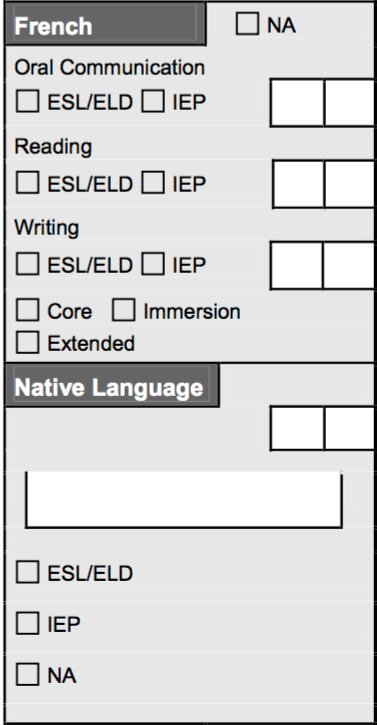May
2017
Indigenous Education – Markers along my journey…
As a first year teacher back in 2007, First Nations, Métis and Inuit (FNMI) studies did not factor into my grades 7 and 8 Core French classes in an inner-city Canadian school. Since I didn’t teach Social Studies, it did not occur to me to include FNMI issues into my classes. Additionally, I purposely avoided engaging with my students about cultural, religious or ethnic heritage, based on the advice of a more experienced colleague. Fast-forward to June when I was asked to participate in a division-wide “Shopping Mall” unit. I created a worksheet which listed words and phrases that store-owners at a mall might need (e.g., Now Open, Welcome, On Sale, Half Price, Thank You, etc…) and had the students translate these phrases into French and other languages, with the help of their multilingual classmates. I was totally surprised when I saw that someone had written in Cree. Not only did I have a First Nations student in my class, not only had it taken me until nearly the end of the year to create conditions where he could easily choose to self-identify, but, because of his name (Jacob Wolf*), I had, until that time, transposed my own cultural biases onto him and assumed he was Jewish! This was an a-ha moment for me and changed the way I engaged with my students from then on. In recent years, I have worked hard to create a more open classroom environment where we can all learn from each other. At times, this learning includes exposing our own biases and looking around with fresh eyes.
 Once I started thinking more about FNMI issues, it got me wondering about how indigenous families might feel when they see French-Core checked off on their child’s report card and right below that, a checkmark indicating Native Language-N/A. Even just writing that last sentence feels like a punch in the gut, knowing that most elementary students do not have access to a Native Language class and the historical reasons why this might be the case. With that in mind and faced with a very sweet yet seemingly unmotivated student in one of my grade 5 Core French classes, I approached my principal about looking into the possibility of creating an independent unit of study for this boy in his indigenous language, using online resources. She was very supportive of the idea, but unfortunately, at that time there were few resources available online and, I am sad to say, the project fizzled without the student or his family ever learning about it.
Once I started thinking more about FNMI issues, it got me wondering about how indigenous families might feel when they see French-Core checked off on their child’s report card and right below that, a checkmark indicating Native Language-N/A. Even just writing that last sentence feels like a punch in the gut, knowing that most elementary students do not have access to a Native Language class and the historical reasons why this might be the case. With that in mind and faced with a very sweet yet seemingly unmotivated student in one of my grade 5 Core French classes, I approached my principal about looking into the possibility of creating an independent unit of study for this boy in his indigenous language, using online resources. She was very supportive of the idea, but unfortunately, at that time there were few resources available online and, I am sad to say, the project fizzled without the student or his family ever learning about it.
Now, thanks to advances in technology, there are quite a few places online where teachers can turn to to support indigenous language learning. Here are a few links:
Article and CBC Radio Piece: Should non-Indigenous Canadians learn Indigenous languages?
NewJourneys.ca – Resources for learning Cree
http://www.tansi.tv: Games, stories, and videos to help kids learn Cree
http://www.omniglot.com/writing/cree.htm
“(Becoming an Indigenous education partner) simply requires an open mind, and a commitment to professional learning. The reality is that all teachers in Ontario need to be armed with a toolkit of knowledge, so that they have the skills and confidence to teach FNMI content in their classrooms.” (http://etfovoice.ca/node/586) I am at the beginning of this journey and am continuing to learn in this area.
*I have slightly modified this student’s name to preserve his privacy.
**This is the third of a series of posts that I am writing based on prompts from my Integration of Information and Computer Technology in the Classroom Part 2 course.**
P. Mackett
May 29, 2017 at 11:51 pm (7 years ago)Wonderful “personal reflection” to your post. You have used some strong supporting documents/links as well on this topic.